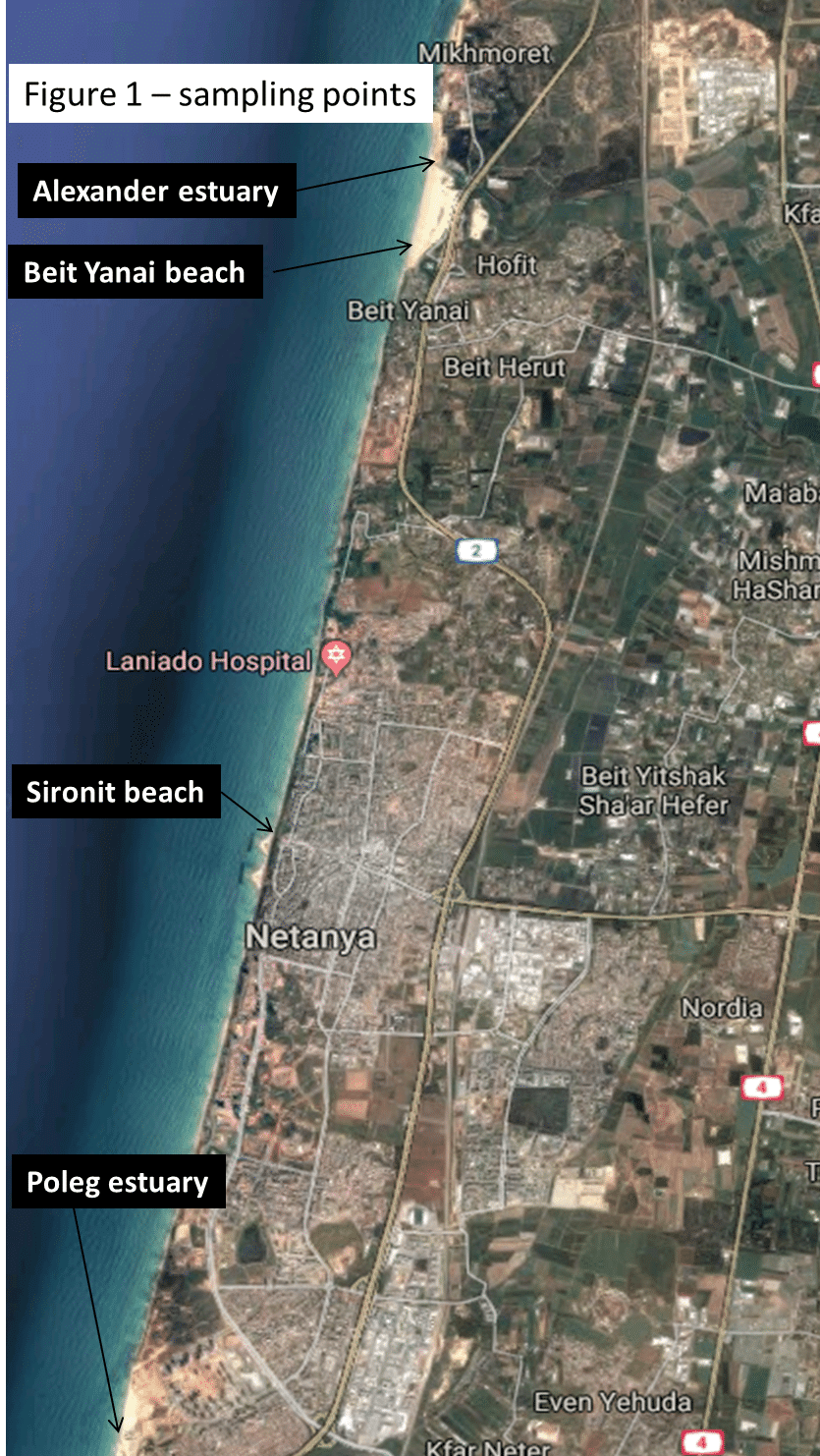
Carbapenemase Producing Enterobacteriaceae in River Estuaries and Coastal Water of Netanya
2Ruth and Bruce Rappaport Faculty of Medicine, Technion University, Israel
3Microbiology Laboratory, Sanz medical center, Laniado hospital, Israel
4Kinneret Lake Laboratory, Israel Oceanographic and Limnological Research (IOLR), Israel
Background
The role of the environment in the human epidemiology of carbapenem resistant Enterobacteriaceae (CREs) is poorly understood. Several reports described carbapenemase-producing Enterobacteriaceae (CPE), cultivated from freshwaters of rivers and seawater, but there are no data from Israel. We encountered a young patient diagnosed as a rectal-carrier of 2 CPEs, both harboring the blaKPC sequence, after near-drowning in seawater near Netanya. In this study we aimed to study river estuaries and the nearby Netanya beaches for the presence of CPEs.
Methods
On 2 occasions (June, July 2018) we filtered coastal water (Beit-Yanai and Sironit beaches) and freshwater (Alexander and Poleg estuaries) through 0.2µm sterile cellulose acetate membranes. Filtered bacteria were cultured in thioglycolyte broth media and transferred to different solid media. Enterobacteriaceae growing on Chromagar MSupercarba (Hylabs®) plates were isolated, identified and subjected to modified Hodge test or CARBA-NP hydrolysis. Carbapenemase genes (blaKPC, blaVIM, blaNDM, blaIMP, blaOXA-48) were identified using Cepheid® GeneXpert Carba-R and blaIMI using homemade-PCR in the reference laboratory.
Results
Four CREs were identified from the environment: 2 CP E. cloacae blaIMI, found in both Alexander estuary and seawater of Beit-Yanai; 1 CP E. coli blaOXA-48 found in Poleg estuary, and 1 E. cloacae non-CP CRE found in Alexander estuary. The 3 Enterobacter spp had similar antibiogram phenotype.
Conclusions
On two occasions CREs were easily cultivated from seawater of a popular recreational beach as well as from 2 river estuaries in Netanya. The bacterial species as well as the carbapenemase types found in the environment are quite rare compared with the clinical human epidemiology in the hospital serving the population of this district. More research is required in order to reproduce these findings, to investigate sources and persistence of rivers and coastal water pollution and to define the role “environmental” strains have in human epidemiology and disease.


Powered by Eventact EMS
